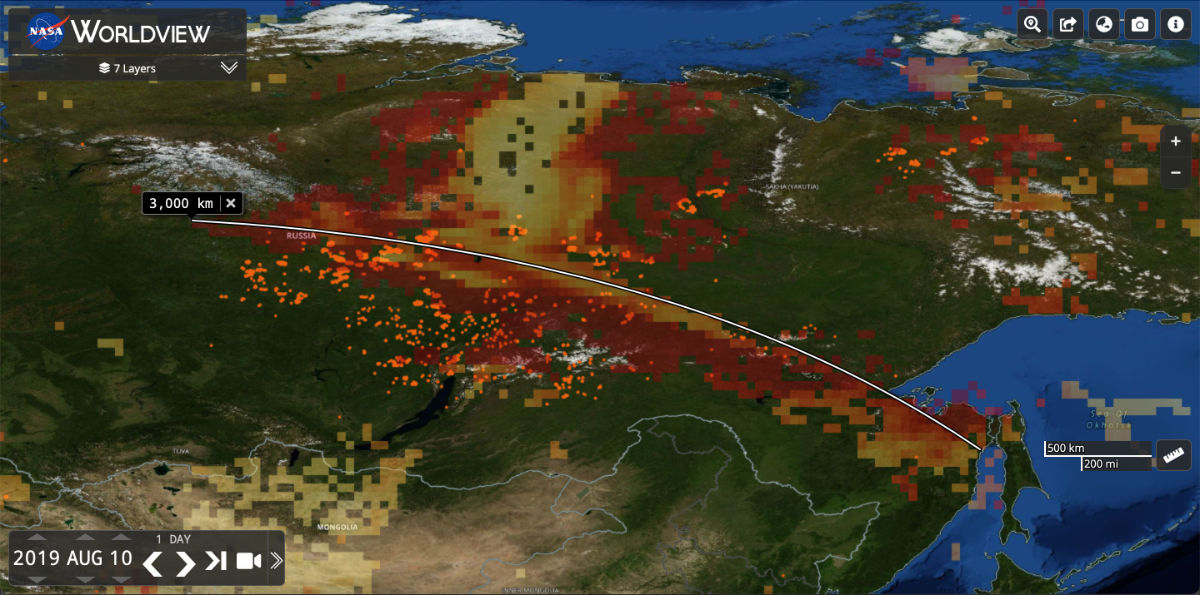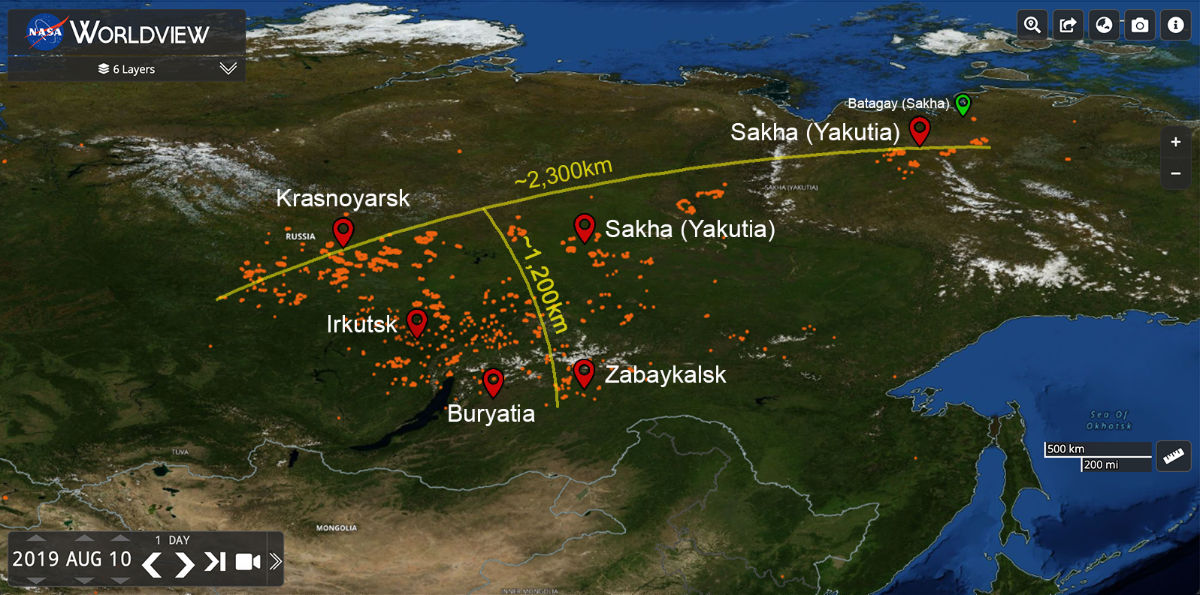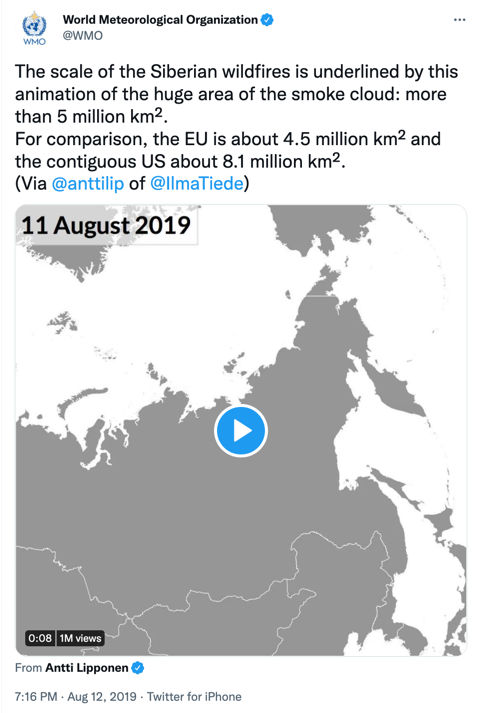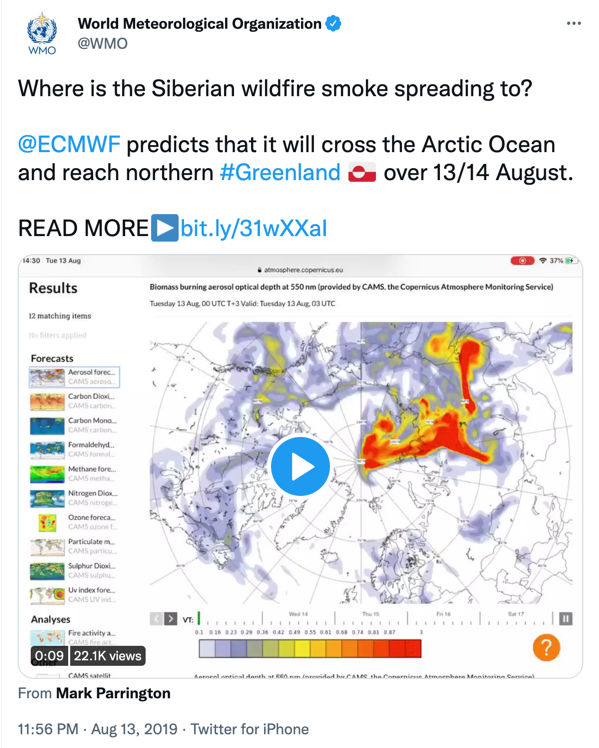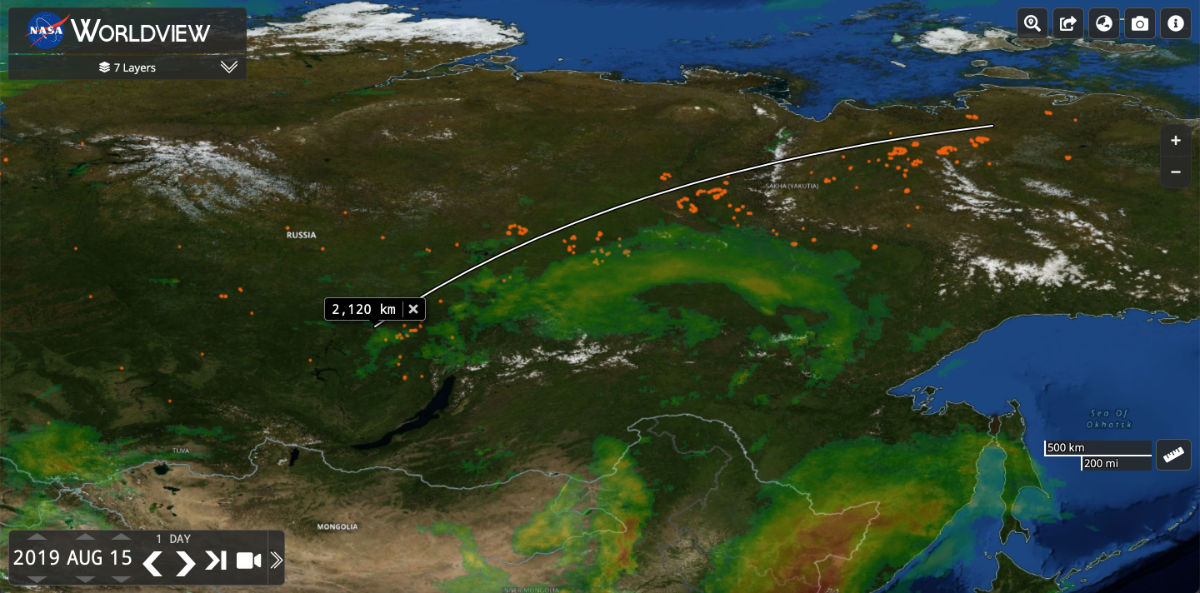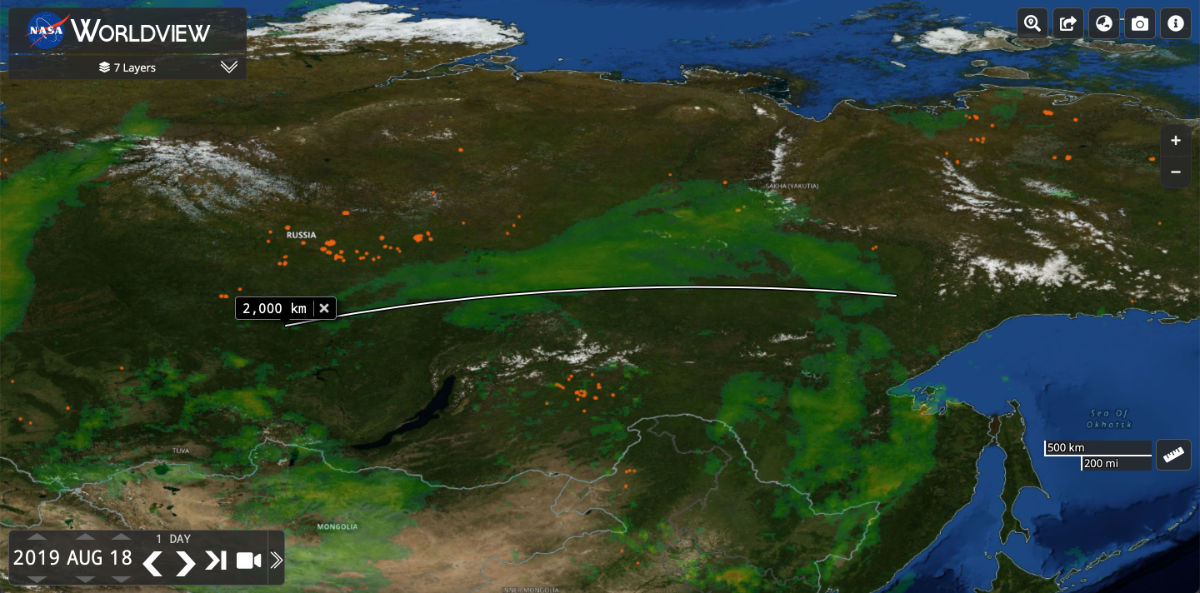Overview
Wildfires had been raging for months across countries around the Arctic Circle this year. This region constantly experiences cold temperatures and is covered by ice almost all year round so it is deeply concerning that wildfires have taken root here. Since the beginning of 2019, at the world’s largest forest in Siberia, over 13 million hectares have been burnt, of which 5.1 million hectares alone were in July. Both June and July were our planet’s hottest months on record.
Outcome
Kyrios brought forth regular rainfall between 11 August to 6 September 2019 to extinguish wildfires in Siberia's boreal forest, despite forecasts of no rain till October. The rainfall also enabled the lands to regenerate.
Crisis Situation
- Over 13 million hectares burnt in Siberia
- June and July were the hottest month on record for the planet
- In July, more than 79 megatons of CO2 was released
- 197 billion tons of water released due to Greenland's ice melts
- Smoke from the Siberia wildfires spanned an area larger than the European Union
Timeline of Events
Skip to sectionFires across the Arctic released a record 50 megatons of CO2 in June — equivalent to Sweden’s total annual emissions and more than the past eight Junes combined — and 79 megatons in July, according to NASA. Copernicus Atmosphere Monitoring Service wrote that “Arctic wildfires are especially worrisome as particulate matter settles…and darkens the ice, leading to sunlight being absorbed rather than reflected, which could exacerbate global warming.” Hundreds of this year’s Siberian fires were north of the Arctic Circle, meaning more particles were expected to land on the ice sheets.
Unfortunately, smoke from wildfires in the central and eastern regions of Siberia, which at one point covered an area larger than the European Union, have already spread to Alaska, Canada, and Greenland. This will further exacerbate Greenland’s massive ice melts, which have already released 197 billion tons of water into the Atlantic Ocean in the month of July alone. Scientists expected such a scale of ice melt to only happen 50 years from now.
Pyotr Tsvetkov, who runs the forest fire lab at the Sukachev Forest Institute in Krasnoyarsk, Russia, said: “We’re waiting for rain…Fires this powerful won’t be extinguished by even a strong downpour, they need rainy weather, but that’s not in the forecast.” As such, Siberia forests would likely burn until October 2019 when rain or the first snow arrives.
Kyrios became aware of the Siberian wildfires on 11 August 2019 and immediately began to intervene. At that time, several threatening wildfires encircling the polar region – in Greenland, Alaska and Canada – were also brought to Kyrios’ attention. While in other parts of the world, another major crisis was unfolding as the Amazon Rainforest of Brazil was being set ablaze by farmers and ranchers. Spain (Gran Canaria), Australia (Victoria) and Africa (Congo) were also experiencing wildfires.
Wildfires that had been burning across the world:
- Siberia, Russia, since May 2019
- Greenland, since July 2019
- Canada, since May 2019
- Alaska, United States, since June 2019
Rest of the world
- Amazon, Brazil, since January 2019
- Canary Islands, Spain, since August 2019
- Australia, since July 2019
Kyrios decided to intervene in the wildfires in the aforementioned countries, with greater focus on Siberia and Amazon, and forecast that, “From 15 August to 6 September 2019, rains will fall upon these fires and extinguish them.”
After more than three weeks of Kyrios’ tireless interventions, raging wildfires in most of these countries were successfully contained, while some were given a much needed respite.
Why did Kyrios intervene? Kyrios explains the science of the dangers of the wildfires
Kyrios explained the gravity of the situation and why it is important that extensive and intense wildfires not be allowed to continue. These wildfires were encircling the Arctic Circle and destroying boreal forests that are Earth’s vital carbon sink. Air temperatures will skyrocket, reaching 50 or even 80 degrees Celsius. The wildfires were also seriously disrupting the natural balance of our planet’s geological and climate system, as well as its biogeochemical cycle. As scientists have already alluded to, not only will there be more carbon released into the atmosphere, the smoke released will also exacerbate ice melt, causing sea level to rise, more heavy rainfall events, violent hurricane seasons, storm surges, tsunamis and so on, inundating coastal regions and low-lying areas globally.
Kyrios also added that as the wildfires ravage the forests in these countries, the geo-cellular structure of our Earth will be damaged by the prolonged intense heat, becoming loose and lifeless wastelands. When trees are destroyed, the soil loses its symbiotic relationship with the trees that help sustain its ecosystem. When the soil ecosystem is damaged, soil transpiration, a natural process in which clean air is released after it has been cleansed by the soil ecosystem of dust and other pollutants, can no longer take place. The damaged soil will not be able to sustain life for years. Kyrios also warned that damaged soil will sink, and result in sinkholes that could appear in places beyond the wildfires. Many regions will even experience mountains collapsing and earth cracking.
In addition, Kyrios shared that what is possibly unknown yet to science is how severe heat from prolonged wildfires can travel downwards in the ground thereby overheating Earth’s core. This can inadvertently lead to increased geothermal heat and volcanism in locations beyond the fires – even dormant volcanoes can become active again. Kyrios said that Earth has a natural process of moderating heat in its mantle and core by releasing heat through vents such as volcanoes, undersea hydrothermal vents and hot springs. Kyrios added that while we can only see the smoke and fires above ground, the bigger danger is what’s unseen and happening underground.
The heat and smoke from wildfires will travel underground to other regions, including colder places in the north. If wildfires are not stopped in time, the heat and smoke will permeate Earth’s crust beneath the sea and warm the Arctic seas. Combined with convection, the warm seawater will flow to Greenland and the Arctic Circle.
As Earth’s bedrock and oceans become warmer, they can then cause the bottom of ice sheets to melt. Kyrios warned that ocean waters can also warm when heat from the wildfires spreads laterally underground to the edges of the continents and is transferred from land to water. All these factors will cause polar ice to melt at unprecedented rates.
We can only expect more erratic and extreme weather and climate events to threaten human civilization as higher temperatures and reduced salinity of the ocean water affect the dynamics of our ocean currents globally.
The risks of getting skin cancer will also greatly increase as the ozone layer diminishes and allow more ultraviolet rays to reach Earth’s surface.
How did Kyrios contain the wildfires around the Arctic Circle and in other parts of the world?
Kyrios was born with this ability, and together with a thorough understanding of Earth’s natural systems, as well as of the cosmic systems, Kyrios is able to influence complex weather systems that enables the onset of heavy and sustained rains in the areas of concern.
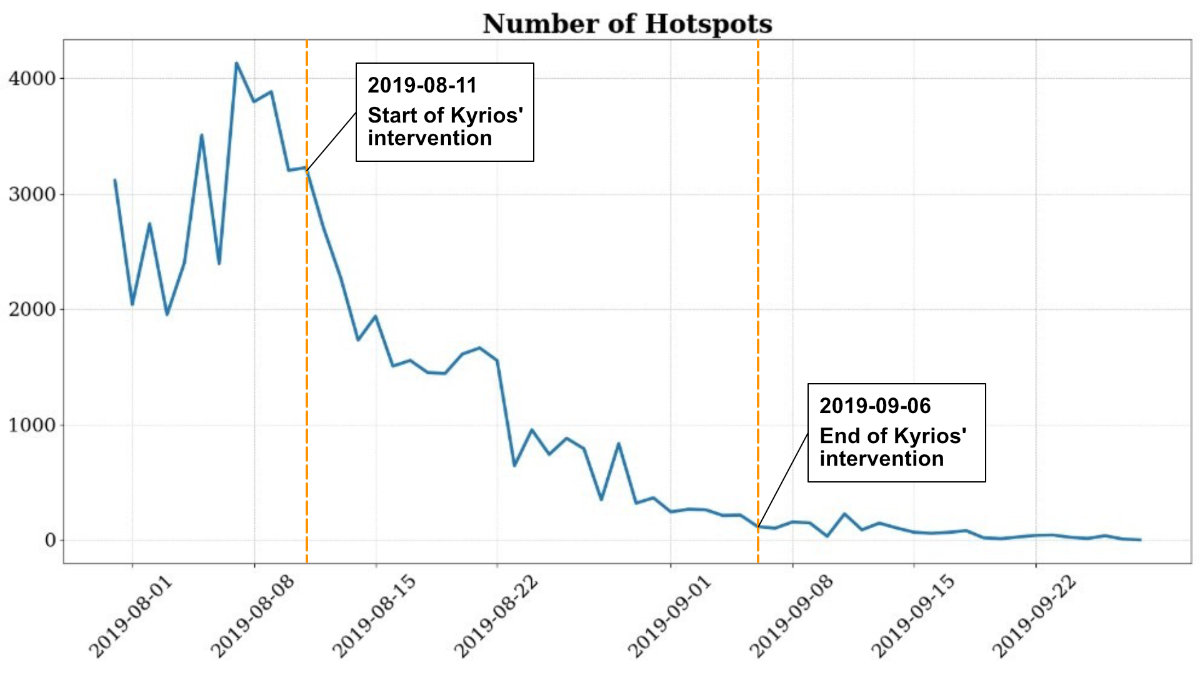 Number of burning hotspots in Central and Eastern Siberia decreased steadily over the course of Kyrios' intervention period, from more than 3000 to around 100 hotspots, definitively ending Russia's wildfire crisis. **Data has taken into account the wildfire hotspots that were not captured by NASA WorldView due to presence of cloud cover. Source: Giglio, L., Justice, C., Boschetti, L., Roy, D. (2021). MODIS/Terra+Aqua Burned Area Monthly L3 Global 500m SIN Grid V061 [Data set]. NASA EOSDIS Land Processes Distributed Active Archive Center.
Number of burning hotspots in Central and Eastern Siberia decreased steadily over the course of Kyrios' intervention period, from more than 3000 to around 100 hotspots, definitively ending Russia's wildfire crisis. **Data has taken into account the wildfire hotspots that were not captured by NASA WorldView due to presence of cloud cover. Source: Giglio, L., Justice, C., Boschetti, L., Roy, D. (2021). MODIS/Terra+Aqua Burned Area Monthly L3 Global 500m SIN Grid V061 [Data set]. NASA EOSDIS Land Processes Distributed Active Archive Center.
Will this happen again?
Unfortunately, yes. Kyrios can only help to provide temporary relief for climate crises but the interventions do not solve the underlying causes of the problems, which are human activities. Government policies, political agendas, business practices, personal lifestyle choices, and even our life philosophies, will all have an impact on our Earth.
